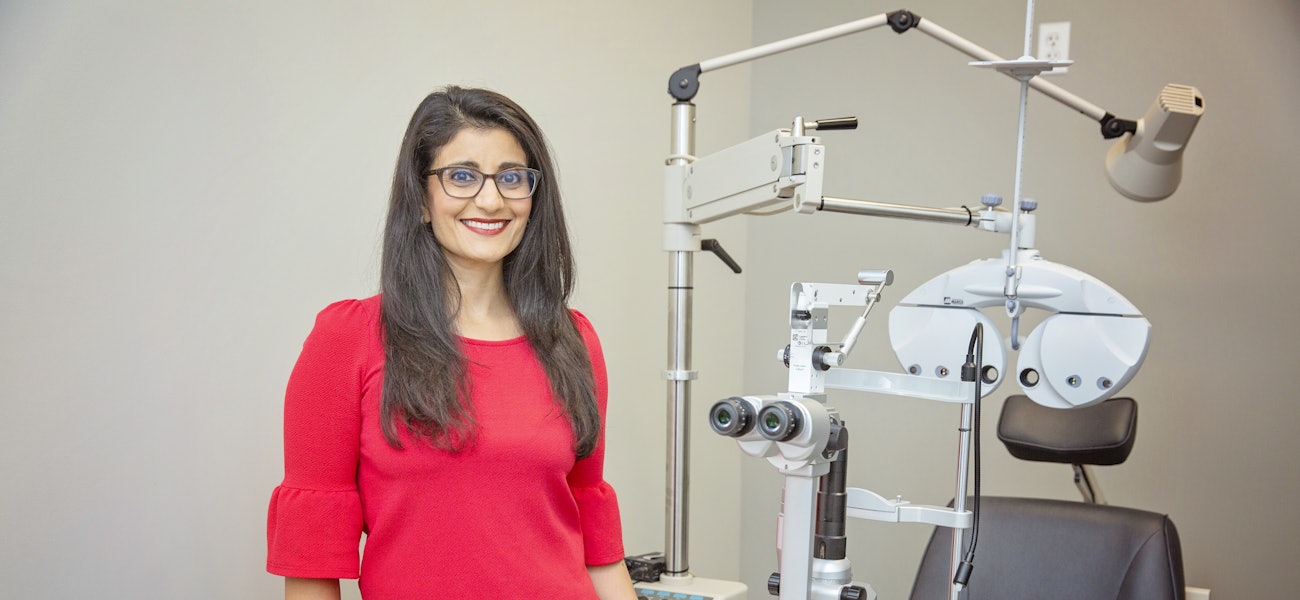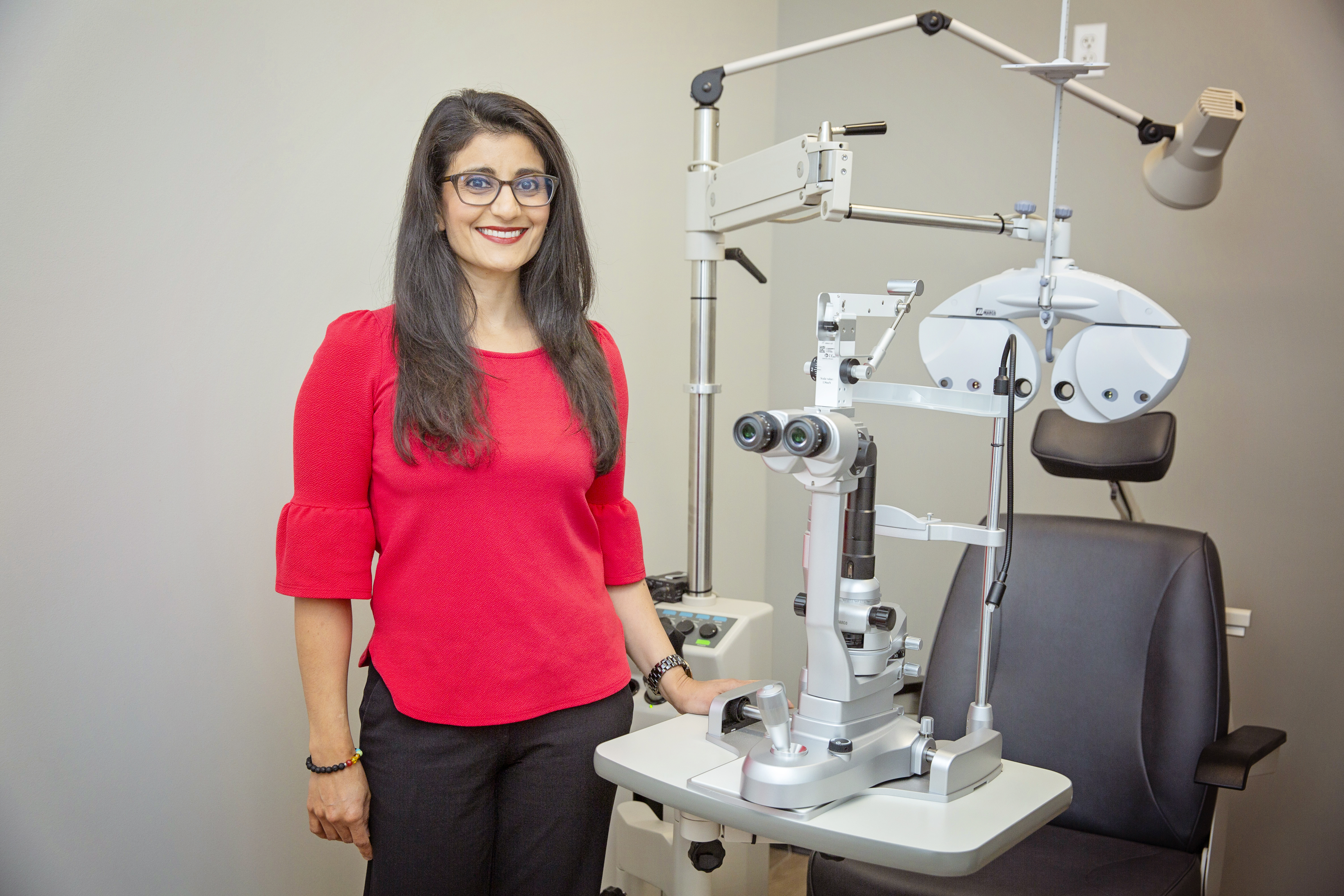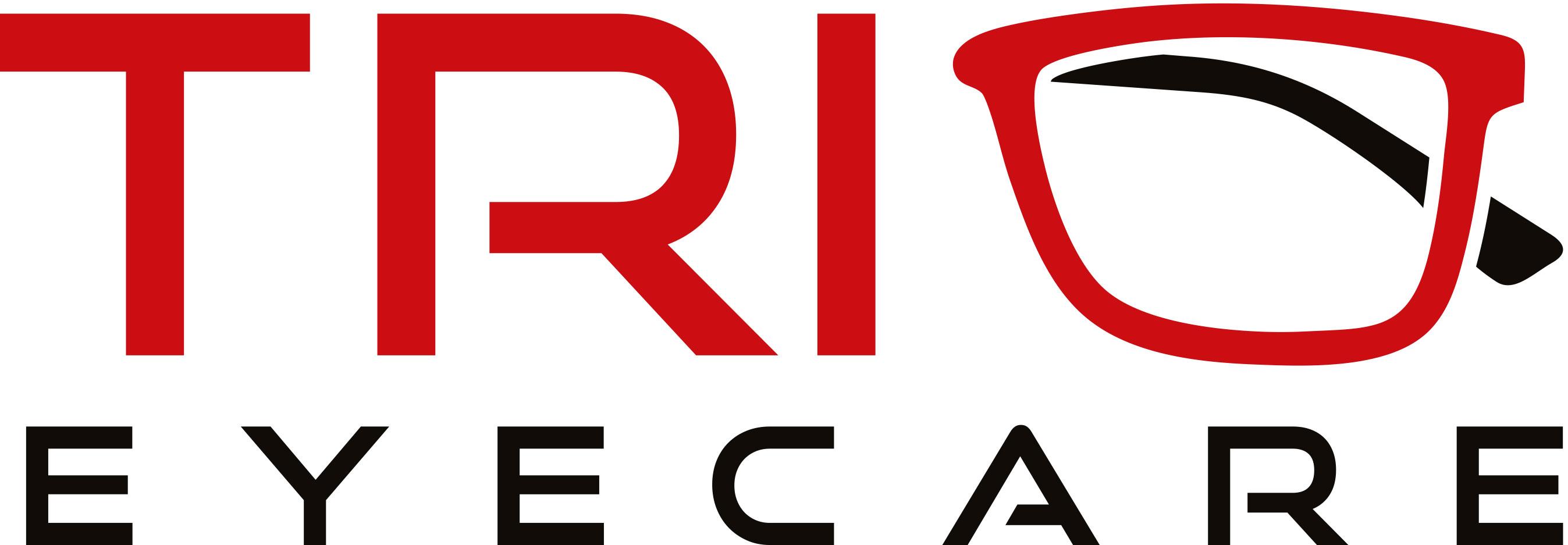Sponsored by TRIO EyeCare
The most common cause of visual impairment in children between 5 and 15 years of age is myopia, and it increases the risk of eye diseases as they age. If left uncorrected, myopia can have a significant impact on school performance. Once children are old enough to start reading, prevalence in myopia tends to increase dramatically.
Often called “short-sighted’’ or “near-sightedness”, a person with myopia can see clearly up close—when reading a book or looking at a phone—but words and objects look fuzzy on a blackboard, on television or when driving. There have been a multitude of studies showing the impact on quality of life in patients of all ages. Severely myopic children who have visual symptoms like tired eyes and headaches often tend to have lower self-esteem. Adolescents with myopia also tend to experience a higher level of anxiety.
Dr. Reshma Amin is a local expert. A Baton Rouge native and graduate from Baton Rouge Magnet High School, Dr. Amin received her BS in Microbiology from LSU, then received her doctorate in Optometry from the Illinois College of Optometry in Chicago, IL. Dr. Amin returned home and has been serving the Baton Rouge community and proudly opened her own private practice called TRIO Eyecare in 2019.

“Spending more time doing close work such as reading, playing computer games, drawing or using smart phones and tablets has been linked to development of myopia,” Dr. Amin says. “These days, even toddlers use electronic handheld devices, resulting in an increase in exposure to close work at a younger age leading to more myopic children.”
In younger children, myopia can progress at an alarming rate because their eyes are growing faster, leading to higher levels of myopia, stronger glasses and more eye health risks:
• Retinal Detachments when the light sensitive ‘film’ lining the back of the eye pulls away from its base, causing distorted vision or blindness depending on its location
• Glaucoma, causing increased pressure in the eye which damages peripheral vision
• Cataracts: a cloudy window in the middle of the eye, like looking through a foggy windscreen
• Myopic maculopathy (MM), also known as myopic macular degeneration, is the most serious, irreversible, vision-threatening complication and the leading cause of bilateral visual impairment and blindness.

Smart phones are great, but too much screen time can increase the risk of eye damage and diseases in adulthood. Harmful blue light emitted from tablets and phones can damage long-term eye health and affect sleep. While there are no set guidelines yet on how much to limit a child’s overall time spent on screens, Dr. Amin recommends screen time outside of school work be limited to one hour daily and should be avoided close to bedtime.







